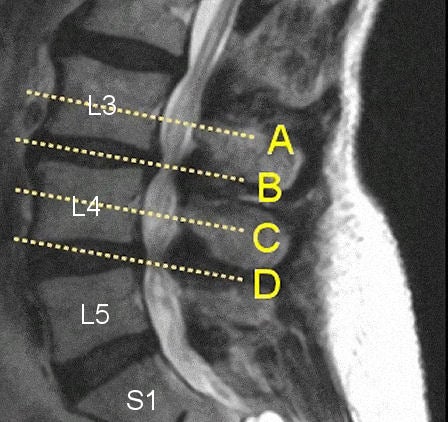 |
 |
||
|
|
|
|
|
| Lumbar Spinal Stenosis:
T2-weighted MRI of the Lumbar
Spine; (Left) Mid-sagittal view; (Right) Axial scans at different levels
corresponding to the labels on the sagittal scan. Note at levels B and D, which
correspond to the L3-4 and L4-5 disk levels respectively, there is moderate central
canal stenosis. The thecal
sac has taken on a triangular shape and the CSF signal (bright white) is completely attenuated. Lumbar spinal stenosis frequently presents with so-called "neurogenic claudication," whereby the patient experiences back and radicular pain with prolonged standing or walking. In contrast to vascular claudication, neurogenic claudication is only relieved by sitting, whereas symptoms from vascular claudication improve if the patient rests either in the standing or sitting position. Spondylosis is a degenerative condition caused by a combination of disk disease, ligament hypertrophy and facet/bony hypertrophy. |
Revised
11/22/06
Copyrighted 2006. David C Preston